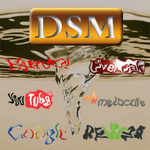Death on YouTube
Today, Toronto film critic and film programmer of the Toronto International Film Festival, Cameron Bailey visited Humber College to speak in a lecture series.
His lecture was entitled "YouTube Apocalypse: Watching Death on Demand".
Bailey commented on much of what Dead Sea Media has been discussing the past few weeks. However, with a focus on the popular YouTube online video sharing service, Bailey demonstrates how death is available to us with a click of a mouse. He used video clip examples during his speech and DSM will choose and discuss these videos.
Bailey began his discussions on the Saddam Hussein hanging video as captured by an official with his cell phone.
The video raised questions about public executions and how they have been pushed back into culture through a website as public displays of the spectacle of death. Public hangings were the most popular method for European and North American executions well into the mid 1960's. However, some countries had to stop public displays because they were inciting blood lust. Saddam's execution was popular because it was not what mainstream media forced us to watch, a choreographed, staged execution. People showed favour toward a video that was outside the public norm and ripped in social fabrics created by the mainstream media.
Saddam's hanging was compared to this hanging by American troops in WWII. This video shows fixed camera positions and even the final drop. Unlike the Saddam video, this was professionally and probably government filmed. Brings up questions of how things are changing, how almost any moment in time can be documented and put on display for the world to see.
This video was the last execution by guillotine in the public, and came at a time when executioners toyed with filming their actions. But public executions did not last. People had become desensitized to the display.
The Vietnam War brought visuals to the tube of Americans as reporters joined soldiers on the front lines. Along with visuals protests against the violence and cries to remove soldiers spread. This television video captures the same 1968 moment Eddie Adams' Pulitzer Prize winning photograph captures. You can see the flash go off before the man is shot in the head.

Question of Authenticity
When looking at death videos on YouTube one may question authenticity. This staged film of the execution of Mary, Queen of Scots from 1895 was horrific in nature, almost too real to be true at the time.
Now, when a video is posted, debates rise over the authenticity of the footage. People argue as if they are disappointed, angry even, that they did not witness an actual death caught on film. Why would people stage these events anyway? Mocking the beheading of journalists and soldiers, people (mainly male youth) comment on death through humour, but not respectable humour. They are mindless and ignorant displays.
Compilation Videos
Two videos discussed were edited products and not just raw clips. The video below shows dramatic footage by soldiers in Iraq as a suicide car bomber blows up on an Iraqi street. However, most interesting is the build-up to the event and the how well documented it was. For it to be available online seems to show favour of these type of events and how they can be visually captivating. A music track is put behind the images, making commentary on the events through song.
[The footage could not be embedded please click here to watch]
Bailey brought this compilation of car crashes and cars striking pedestrians to the forefront.
Comments about the music, Radiohead's Killer Cars, suggested someone decided to make a music video using car crashes as the focus. Why not? Right? What strikes me most, is the fact they used the live version of the song, so you can hear fans cheering them on as they perform or cheering on the drivers as they weave in and out traffic before coming face-to-face with their bitter end.
The Humber College presentation was very suitable for our subject here at Dead Sea Media and I would like to thank Cameron Bailey for taking his time to speak with me personally.
Watch out for another video compilation video soon by DSM. The video will compare images of death through history and how art and reality clash in modern times.





No comments:
Post a Comment